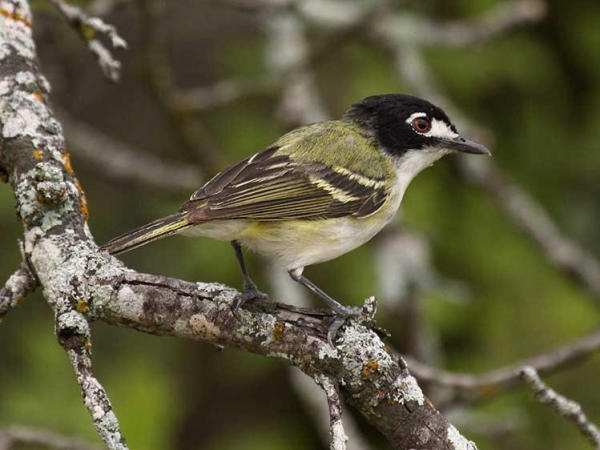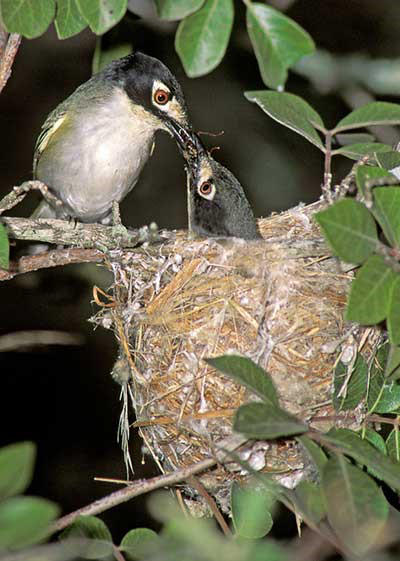
Black-capped Vireo photo by Gil Eckrich

Black-capped Vireo feeding a large nestling in its woven nest, photographed by Greg Lasley
|
There are now at least 5,200 Black-capped Vireos, and perhaps as many as 14,000 – a dramatic increase from the low of only about 350 birds when the species was declared Endangered in 1987. This spring, the U.S. Fish and Wildlife Service removed Black-capped Vireos from the Endangered Species List, recognizing the species reached population goals established by biologists during the recovery process.
Last month, the Post-Delisting Monitoring Plan for Black-capped Vireos was announced, which initiates a 12-year monitoring project to ensure the vireo’s populations continue to increase, or at least remain stable. Black-capped Vireos are the smallest of the vireo species that regularly range in the United States. They once nested in portions of Texas, Oklahoma and south-central Kansas. As the vireos’ natural habitat gave way to agriculture and urban sprawl, its nesting range shrank to just a few locations in Texas and Oklahoma.
Black-capped Vireos also suffered from brood parasitism by Brown-headed Cowbirds that lay their eggs in the nests of other species. Cowbird nestlings forcibly eject brood mates from the nest or out-compete them for food. Many adult Black-capped Vireos ended up rearing young cowbirds, contributing to long-term vireo declines.
The Black-capped Vireo’s recovery is the result of partnerships that includes the Army’s Fort Hood in Texas, where it was demonstrated that military training can be successfully balanced with endangered species recovery. Texas Parks and Wildlife Department spearheaded a wholistic approach to managing the bird’s habitat that includes rotational cattle grazing, prescribed burns to regenerate the preferred scrubby nesting habitat, and a deer management program. The Nature Conservancy manages Black-capped Vireo preserves in Texas. The Natural Resources Defense Fund encouraged private landowners to assist with Black-capped Vireo recovery, and the U.S. Department of Agriculture’s Natural Resources Conservation Service provided vital funding to private landowners to bolster habitat recovery.
Yes, it may take a village to recover a species, but it works! The Endangered Species Act incentivizes collaboration that can help what appears to be even the most challenging conservation efforts.
Learn more about Black-capped Vireos at https://www.fws.gov/southwest/stories/2018/blackcappedvireo.html
Read about the Post-Delisting Monitoring Plan at https://www.fws.gov/news/ShowNews.cfm?ref=final-plan-to-ensure-long-term-health-of-recovered-songbird-available-&_ID=36314